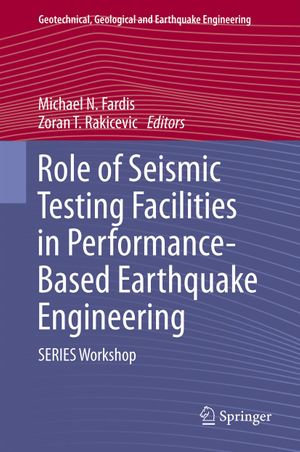
Role of Seismic Testing Facilities in Performance-Based Earthquake Engineering
SERIES Workshop
By: Michael N. Fardis, ?Zoran T. Rakicevic
eText | 7 October 2011 | Edition Number 1
At a Glance
eText
$319.00
or
Instant online reading in your Booktopia eTextbook Library *
Read online on
Desktop
Tablet
Mobile
Not downloadable to your eReader or an app
Why choose an eTextbook?
Instant Access *
Purchase and read your book immediately
Read Aloud
Listen and follow along as Bookshelf reads to you
Study Tools
Built-in study tools like highlights and more
* eTextbooks are not downloadable to your eReader or an app and can be accessed via web browsers only. You must be connected to the internet and have no technical issues with your device or browser that could prevent the eTextbook from operating.
ISBN: 9789400719774
ISBN-10: 9400719779
Series: Geotechnical, Geological and Earthquake Engineering : Book 22
Published: 7th October 2011
Format: ePUB
Language: English
Publisher: Springer Nature
Volume Number: 22
Edition Number: 1
You Can Find This eBook In
This product is categorised by
- Non-FictionEarth Sciences, Geography, Environment, PlanningEarth SciencesGeology & The Lithosphere
- Non-FictionEngineering & TechnologyTechnology in GeneralEngineering in General
- Non-FictionEngineering & TechnologyCivil Engineering
- Non-FictionEngineering & TechnologyMechanical Engineering & MaterialsMechanical Engineering
- Non-FictionEngineering & TechnologyMechanical Engineering & MaterialsMaterials ScienceMechanics of SolidsDynamics & Vibration
- Non-FictionSciencePhysicsClassical Mathematics
- Non-FictionEngineering & TechnologyMechanical Engineering & MaterialsMaterials ScienceMechanics of Solids
- Non-FictionEarth Sciences, Geography, Environment, PlanningEarth Sciences























